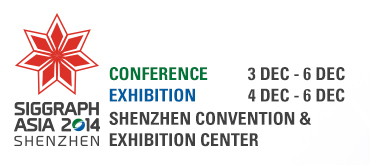Using many lights in real-time applications has been an important goal for many years. The games industry in particular has strived to increase the number of lights to provide enhanced visual quality and realism. Today, high-end games often make use of hundreds of lights in each frame and this is likely to be pushed further in the future. The ability to efficiently manage and shade large numbers of lights brings many possibilities, apart from simply allowing light to be cast from many dynamic objects. In addition, it can support visualizing global illumination solutions or enable detailed artistic light direction. Thus, efficient real-time shading with many lights, represents a potential for solving many of the problems facing the development of next generation high-end games. To achieve the level of performance needed to make this possible, the way which light management and shading is performed has undergone dramatically development in recent years. Both industry and academia has invested great effort pursuing this goal which has resulted in a large number of new and sometimes competing techniques. This course presents an in-depth exploration of this topic, starting with background and leading up to state of the art research, including recent results on supporting shadows. The course combines production experience from game developers with the latest research into efficient many-light algorithms for both desktop and mobile hardware.
Level
Intermediate
Prerequisites
To fully understand the details in this course the ideal audience member should have a working familiarity with real-time shaders, GPUs and graphics APIs. Attendees without this background may not fully understand the details but will benefit from the high level descriptions and analogies used to explain the contents.
Intended Audience
The main audience is game developers, specifically graphics programmers targeting both traditional platforms and mobile hardware. This segment will be able to directly understand the presented material and relate this to their own game engines and technologies.
Additionally, technical managers at game development studios and graphics researchers will benefit.
Presenter(s)
Ola Olsson, Chalmers University of Technology
Markus Billeter, Chalmers University of Technology
Emil Persson, Avalanche Studios
Ola Olsson is a recently graduated PhD from Chalmers University of Technology. As a member of the Computer Graphics group, his research focussed on algorithms for managing and shading thousands of lights in real time, resulting in several publications on Tiled and Clustered Shading, most recently describing how to add support for shadows. He has given several talks about his research at SIGGRAPH and other developer gatherings. Before becoming a PhD student, Ola was a games programmer for around 10 years with roles ranging from game-play programmer on 'Ty the Tasmanian Tiger', to lead rendering programmer on 'Race Pro'.
Emil Persson is the Head of Research at Avalanche Studios, where he is conducting forward-looking research with the aim to be relevant and practical for game development, as well as setting the future direction for the Avalanche Engine. Previously, Emil was an ISV Engineer in the Developer Relations team at ATI/AMD. He assisted tier-1 game developers with the latest rendering techniques, identifying performance problems and applying optimizations. He also made major contributions to SDK samples and technical documentation.
Markus Billeter recently completed his PhD at the Chalmers University of Technology, where he participated in research focusing on real-time rendering and parallel GPU algorithms. Prior to this, he studied physics and complex adaptive systems, where he holds an MSc degree. In late 2012 and early 2013, Markus interned in the Visual Computing team at the Bosch Research and Technology Center where he developed a multi-platform rendering system also targeting mobile/embedded devices.
 English
English 
